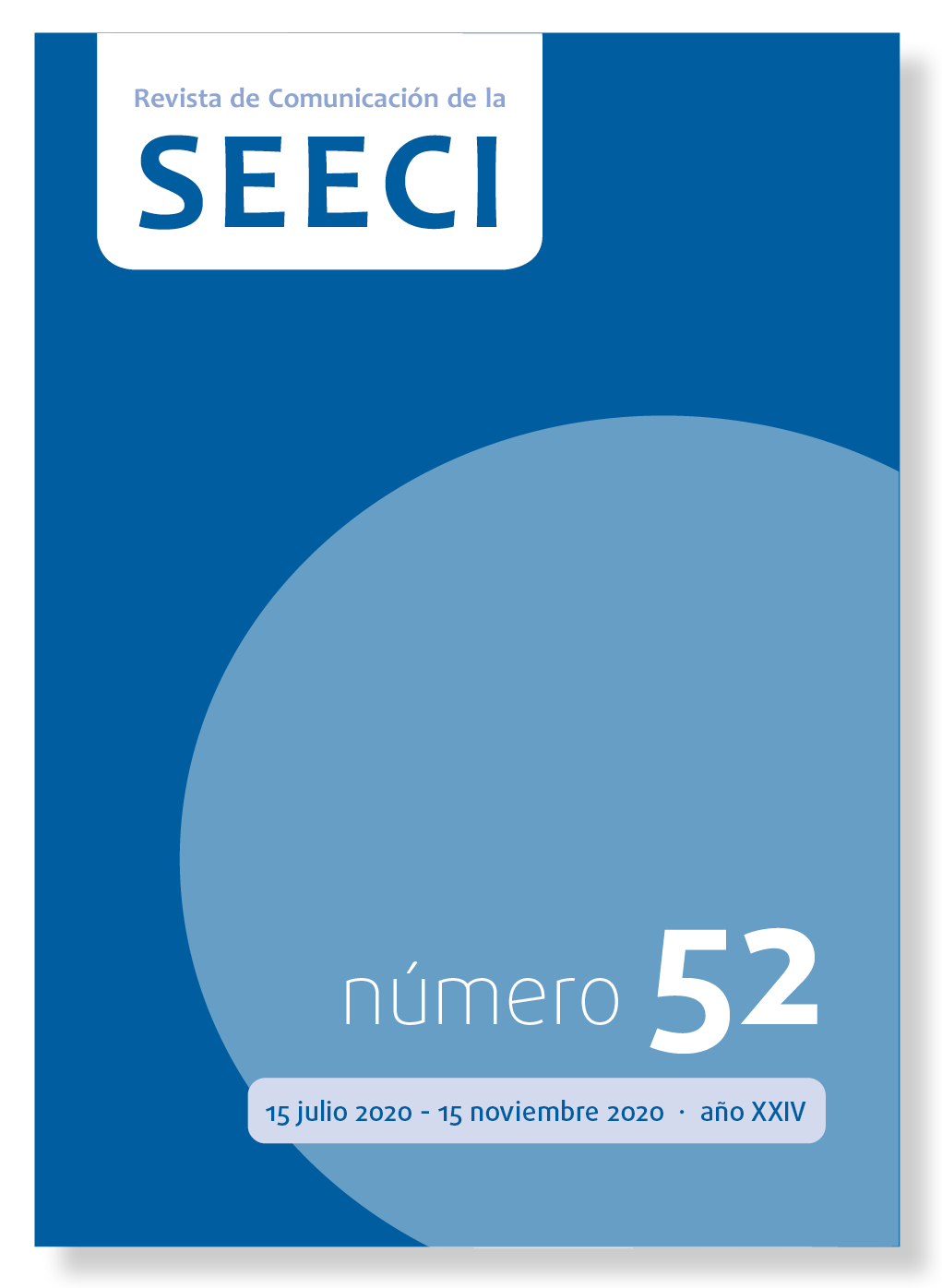Las TIC como herramienta de investigación: analizando las técnicas de programación neurolinguística
Contenido principal del artículo
Resumen
En el presente trabajo de investigación vamos a analizar en profundidad las herramientas características de Programación Neurolingüística y cuestiones íntimamente relacionadas y vinculadas a su entorno, desarrollo, uso y percepción social, con el objetivo último de demostrar o refutar su veracidad respecto a los diferentes tipos de aprendizaje que abarca esta disciplina y a los que afecta indirectamente, así como la idea misma de que la dirección de la mirada (la dirección en la que la persona enfoca los ojos mientras habla con otra, señalando a zonas del cerebro con funciones específicas conocidas) de una persona supone o no un indicativo fiable sobre si alguien miente o dice la verdad. El contenido del trabajo consiste en haber puesto en práctica esta hipótesis y en un esfuerzo por probar sus resultados. De este modo tenemos el objetivo último de alcanzar una conclusión sobre el hecho de si son comprobables o no, refutables o no las herramientas de Programación Neurolingüística y sus elementos asociados; ya que ésta actualmente no está fundamentada ni demostrada con herramientas, técnicas y tecnologías que sean consideradas medibles a diferencia de otras herramientas que si han contado con el beneficio de esta comprobación, como por ejemplo el Eye Tracking.
Descargas
Detalles del artículo
La Revista de Comunicación de la SEECI reconoce y promueve los derechos de autor, así como la necesidad de difundir el conocimiento de manera accesible y equitativa. Nuestra revista opera bajo una Licencia Creative Commons CC BY-NC 4.0, lo que permite a los autores y usuarios:
- Compartir y Adaptar: Copiar, redistribuir y adaptar el material publicado en la revista en cualquier medio o formato.
- Reconocimiento: Reconocer adecuadamente la autoría y proporcionar un enlace a la licencia, indicando si se han realizado cambios.
- No Comercial: No utilizar el material con fines comerciales sin el permiso expreso de los autores y la revista.
- Los autores conservan los derechos de autor y pueden realizar acuerdos no exclusivos para el autoarchivo, depósito o distribución de la versión del editor publicada en esta revista, incluyendo repositorios institucionales, nacionales o internacionales, y sitios web personales.
Citas
Álvarez-Flores, E. P.; Núñez-Gómez, P. & Rodríguez Crespo, C. (2017). E-skills acquisition and deficiencies at the university in the context of the digital economy. Revista Latina de Comunicación Social, (72), 540-559. doi: http://dx.doi.org/10.4185/RLCS-2017-1178
Bustos Martínez, L.; De Santiago Ortega, P. P.; Martínez Miró, M. A. y Rengifo Hidalgo, M. S. (2019). Discursos de odio: una epidemia que se propaga en la red. Estado de la cuestión sobre el racismo y la xenofobia en las redes sociales. Revista Mediaciones Sociales, (18), 25-42. doi: http://dx.doi.org/10.5209/MESO.64527
Blanco Mallada, L. (2009). La gestualidad: significación y estética del rostro y la expresión corporal. Revista Vivat Academia, (105), 40-58. Recuperado de http://www.vivatacademia.net/index.php/vivat/article/view/256/230
Gutierrez Muñoz, J. (2007). Ciencia frente a pseudociencia. Revista Vivat Academia (90), 1-34. doi: http://dx.doi.org/10.15178/va.2007.90.1-34
Hassan Montero, Y., y Herrero Solana, V. (2007). Eye-Tracking en Interacción Persona-Ordenador. No Solo Usabilidad, (6). Recuperado de http://www.nosolousabilidad.com/articulos/eye-tracking.htm
Lavilla Muñoz, D., y Mesonero Izquierdo, R. (2010). Realidad y ficción. Desde la autopercepción a la sociabilización tecnológica: discurrir histórico. Revista de la SEECI, (22), 16-29. doi: https://doi.org/10.15198/seeci.2010.22.16-29
Lorié González, O. (2015). Modelo didáctico de la comprensión de textos escritos desde una perspectiva lingüístico-pedagógica. Revista Inclusiones, 2(3), 76-87. Recuperado de http://www.archivosrevistainclusiones.com/gallery/6%20oficial%20articulo%20jul%20sep%20%20%202015%20rev%20inc.pdf
Manzano Díaz, M.; Bravo Alvarado, R. N., y García Lebroc, L. A. (2019). Las competencias comunicativas en la formación permanente: discursos y realidades. Revista Inclusiones, 6(2), 87-106. Recuperado de http://www.archivosrevistainclusiones.com/gallery/5%20vol%206%20num%202%202019abriljunio19incl.pdf
Mestres Naval, F. y Vives-Rodrigo, J. (2016). Justicia y Ciencia: avanzando juntas para construir un mundo mejor. Revista inclusiones, 4(2), 10-27. Recuperado de http://www.archivosrevistainclusiones.com/gallery/1%20oficial%202016%20abr%20jun%20rev%20inc.pdf
Migallón, I. (2011). Cómo detectar mentiras según la mirada. Psicocode. Recuperado de https://psicocode.com/social/como-detectar-mentiras-segun-la-mirada/
Timoteo Álvarez, J. (2007). Neurocomunicación. Propuesta para una revisión de los fundamentos teóricos de la comunicación y sus aplicaciones industriales y sociales. Mediaciones Sociales, (1), 355-386. Recuperado de https://revistas.ucm.es/index.php/MESO/article/view/MESO0707110355A/21499
Turchet P. (2010). El lenguaje del cuerpo: conozca a su interlocutor a través de sus gestos y posturas. Editorial Ediciones Mensajero, S.A.
Vázquez-Herrero, J.; Negreira-Rey, M. C., & Pereira-Fariña, X. (2017). Interactive documentary contributions to the renewal of journalistic narratives: realities and challenges. Revista Latina de Comunicación Social, (72), 397-414. doi: http://dx.doi.org/10.4185/RLCS-2017-1171en





